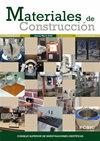用耗散能量法评价聚烯烃增强沥青胶的疲劳性能
IF 1.5
4区 工程技术
Q3 CONSTRUCTION & BUILDING TECHNOLOGY
引用次数: 3
摘要
众所周知,聚合物可以提高沥青胶料的抗疲劳性能。然而,如果聚合物不能成功地整合到沥青粘合剂中,就会产生不希望的结果。本工作的目的是评价三种选定的聚烯烃的加入对其胶粘剂的疲劳性能的影响。选用低、高密度聚乙烯(LDPE和HDPE)和聚丙烯(PP),浓度为4wt .%。采用耗散能量法分析了三种复合材料在25℃时的抗疲劳性能。在线性粘弹性阈值及以上进行了动态时间扫描。在此基础上,考虑LDPE时,结果显示出更好的改善。对于这种粘结剂,在25℃下的荧光光学显微镜观察提供了更均匀的沥青-聚合物分布的形态学证据,这可能是疲劳性能改善的原因。本文章由计算机程序翻译,如有差异,请以英文原文为准。
Fatigue performance evaluation of bitumen mastics reinforced with polyolefins through a dissipated energy approach
Polymers are known to improve the fatigue resistance of sphalt mastics. However, undesirable results can be obtained if the polymer is not successfully integrated into the bitumen binder. The goal of this work is to evaluate the effect of the addition of three selected polyolefins on their mastic’s fatigue performance. Low and high density polyethylenes (LDPE and HDPE) and polypropylene (PP) were chosen and used at the concentration of 4 wt.%. A dissipated energy approach was used in order to analyze the fatigue resistance, at 25 oC, of the three composites studied. Dynamic time sweeps at and above the linear viscoelastic threshold were carried out. Based on that, the results demonstrated a better improvement when the LDPE was considered. For that binder, fluorescence optical microscopy observations at 25 oC provided morphological evidence of a more homogeneous bitumen-polymer distribution which could be behind the improved fatigue behavior.
求助全文
通过发布文献求助,成功后即可免费获取论文全文。
去求助
来源期刊

Materiales de Construccion
工程技术-材料科学:综合
CiteScore
3.20
自引率
9.50%
发文量
38
审稿时长
>12 weeks
期刊介绍:
Materiales de Construcción is a quarterly, scientific Journal published in English, intended for researchers, plant technicians and other professionals engaged in the area of Construction, Materials Science and Technology. Scientific articles focus mainly on:
- Physics and chemistry of the formation of cement and other binders.
- Cement and concrete. Components (aggregate, admixtures, additions and similar). Behaviour and properties.
- Durability and corrosion of other construction materials.
- Restoration and conservation of the materials in heritage monuments.
- Weathering and the deterioration of construction materials.
- Use of industrial waste and by-products in construction.
- Manufacture and properties of other construction materials, such as: gypsum/plaster, lime%2
 求助内容:
求助内容: 应助结果提醒方式:
应助结果提醒方式:


